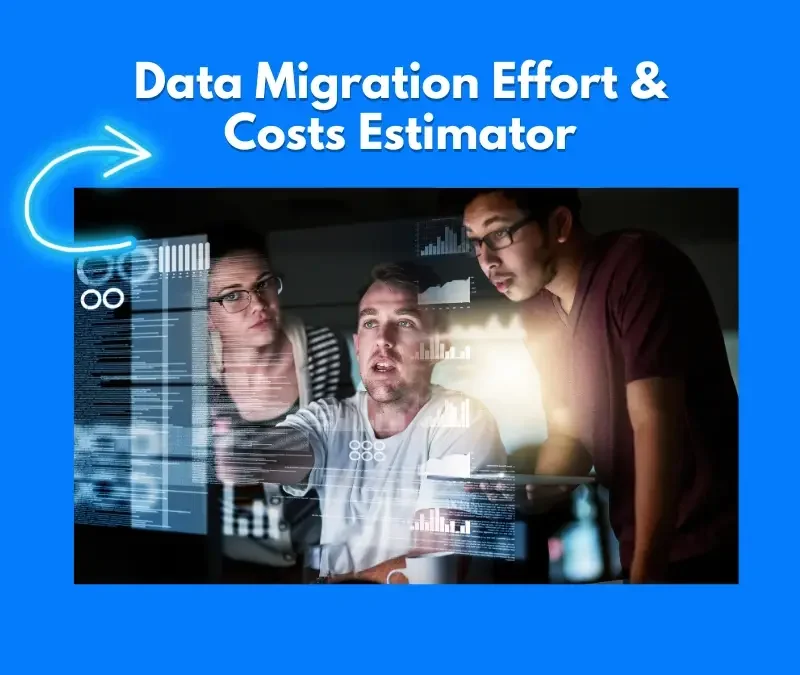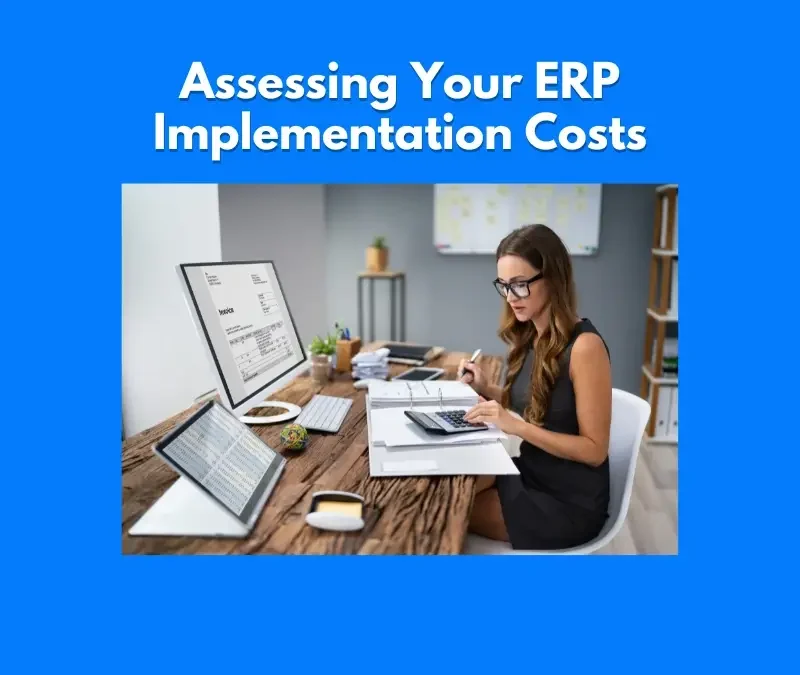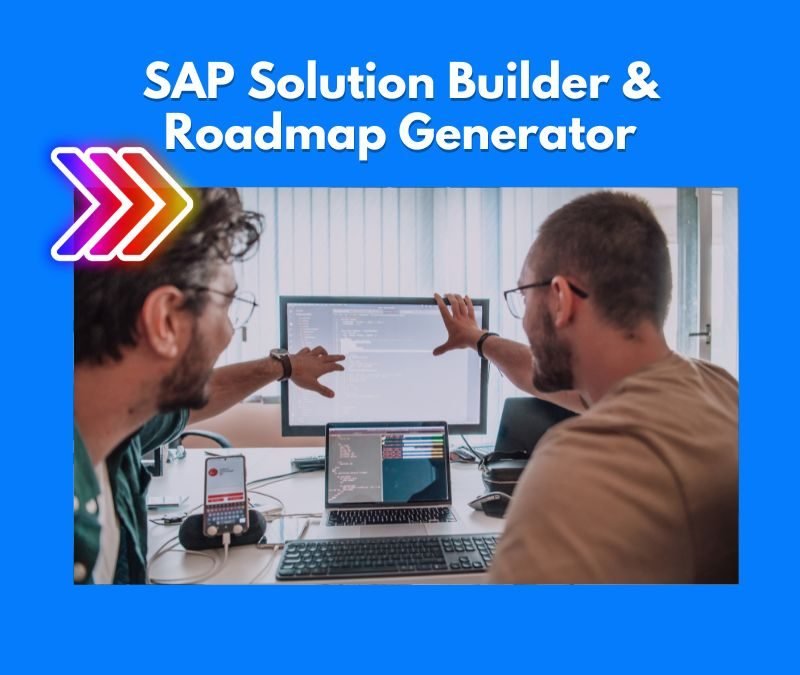SAP Articles
Stakeholder Management: Stop Conflicts Before They Start
Noel DCosta
- Last Update :
Stakeholder conflicts and not uncommon and don’t just appear out of nowhere. They build up over time when expectations aren’t managed, communication is not straight, and decisions are made without alignment. If you don’t handle stakeholders properly from the start, you’ll spend the entire project putting out fires. Good Stakeholder Management means knowing who has the most influence, understanding their concerns, and keeping them engaged.
It’s about dealing with people. If you don’t communicate, you’ll have business leads who feel left out, IT teams who don’t trust the process, and executives demanding last-minute changes.
The best way to avoid this is set expectations early, communicate often, and never assume everyone is on the same page.
Here’s how you can test this: If your inbox is full of “urgent” stakeholder emails, it means your management plan isn’t working. A well-managed project doesn’t have daily escalations, it has structured updates, clear ownership, and decisions that stick.
I once worked on an SAP rollout where IT wanted tight system controls, but Finance needed more flexibility. Before we got on board, the teams were not communicating and were not aligned.
So by the time we came in, we realized that everything was a mess. Finance was frustrated, IT was defensive, and leadership was asking why no one was talking to each other.
So we established a stakeholder map, had regular alignment meetings, and a single source of truth for decisions. If this was done earlier, we would have saved months of arguing.
So as you can see, Stakeholder Management is about balancing priorities, managing expectations, and avoiding last-minute confusion. Even SAP Activate, which is one of the best SAP Implementation strategies, is focussed on managing stakeholders at all stages of the project.

Stakeholder management identifies and engages key individuals who can impact or are impacted by your SAP project.Good stakeholder management means understanding their needs, keeping them informed, and securing their support to overcome resistance and drive successful implementation.
Key Takeaways on Stakeholder Management
- Identify the right stakeholders early. If you wait until problems arise, you’re already behind. Know who has the power to influence your project from day one.
- Set expectations upfront. If you don’t define roles, decision-making processes, and goals early, people will create their own, and they won’t align.
- Communicate regularly. No one likes surprises. If stakeholders only hear from you when there’s a crisis, they’ll assume you’re hiding problems.
- Balance competing priorities. Finance wants cost control, IT wants security, and Operations wants flexibility. You need to keep them aligned before they derail the project.
- Use a stakeholder map. Not all voices carry the same weight. Some people need constant updates, while others just need major milestone reports.
- Document every major decision. If something isn’t written down, it doesn’t exist. You’ll avoid arguments later when people “remember things differently.”
- Create structured escalation paths. Issues will come up. If there’s no clear way to resolve them, they’ll escalate into bigger conflicts.
- Address concerns before they become roadblocks. A frustrated stakeholder today will be your biggest project blocker tomorrow.
- Don’t let executives ignore the details. If leadership only engages at the end, expect last-minute scope changes that wreck timelines.
- Keep politics in check. Some stakeholders just want control. Manage egos, or they’ll manage your project.
What is Stakeholder Management in an ERP Implementation?
Stakeholder management is about making sure the right people are involved, informed, and aligned. If you don’t do it right, you’ll end up with resistance, confusion, and endless delays.
ERP impacts multiple teams e.g. finance, HR, procurement, IT, each with different priorities. If those teams don’t collaborate, your project will be a mess. In my view, It’s about making sure key players understand the changes, agree on priorities, and stay accountable.
If someone feels ignored, they’ll slow down the project. If they feel involved, they’ll push it forward. The goal is to avoid power struggles and keep things moving.
If you don’t manage stakeholders, they’ll manage you. They have the power to kill your project if they feel ignored.
Who are the Key Stakeholders in a Project, and what are their roles?

1. Executive Sponsor
- The person who owns the project from the top.
- Approves budgets, clears roadblocks, and makes final decisions.
- If they lose interest, the project stalls.
- Example: In an ERP project, if the CFO is the sponsor but doesn’t push finance teams to adopt the system, expect delays.
2. Project Manager
- Keeps everything on track including timelines, budgets, risks, and communication.
- The one everyone turns to when things go wrong.
- Example: If a critical module is delayed, the project manager figures out if it’s a real risk or just noise.
3. Steering Committee
- A group of senior leaders who meet regularly to review progress and approve big changes.
- Not there for daily tasks but steps in when something major needs a decision.
- Example: If a vendor is underperforming, the committee decides whether to replace them or renegotiate.
4. Functional Leads (Business Owners)
- Heads of departments that will use the system e.g. finance, HR, supply chain, etc.
- Translate business needs into system requirements.
- If they aren’t engaged, you’ll end up with a system that doesn’t fit their needs.
- Example: A supply chain director who doesn’t define inventory rules properly will cause warehouse chaos post-go-live.
5. IT Team
- Handles system integrations, security, and infrastructure.
- Their job is to make sure the system actually works, scales, and doesn’t create security nightmares.
- Example: If IT isn’t involved early, you might design a process that isn’t technically possible.
6. End Users
- The people who will actually use the system daily.
- If they aren’t trained properly, adoption will be a disaster.
- Example: A procurement clerk struggling with a new interface will revert to spreadsheets, undoing the whole purpose of the system.
7. Change Management & Training Team
- Ensures users know how to use the system and don’t resist change.
- Communication, training, and support fall under them.
- Example: If they don’t prep users early, expect resistance, low adoption, and endless complaints after go-live.
8. Vendors & Consultants
- External partners who implement the system.
- Their job is to deliver, but you still need to manage them. Partners are also important for your success.
- Example: A consulting firm might push unnecessary customizations just to bill more hours. Stay in control.
9. Finance Team
- Ensures the project stays within budget.
- Handles contract negotiations and makes sure spending is justified.
- Example: If finance isn’t involved, you might end up paying for features you don’t need.
10. Customers & Suppliers (For External-Facing Systems)
- If the system affects how customers or suppliers interact with your company, their needs matter.
- Example: A new supplier portal that makes it harder to submit invoices will create friction and payment delays.
Not all stakeholders need the same level of detail. The CFO cares about cost, IT cares about security, and end-users just want to know how their job changes.
ERP Stakeholder Roles and Responsibilities
| Role | Responsibilities | Level of Involvement | Key Challenges |
|---|---|---|---|
| Executive Sponsor | Secures funding, resolves escalations, promotes project alignment | High – throughout project | Competing priorities, limited visibility into day-to-day issues |
| Project Manager | Leads planning, resourcing, budget control, timeline adherence | Full-time – all phases | Scope creep, stakeholder coordination, change control |
| Business Process Owner | Defines future-state process design and validates solution fit | High – explore to realize | Balancing project and operational workload |
| Functional Consultant | Configures modules, captures requirements, supports testing | Core – realize to deploy | Change requests, data dependencies, legacy alignment |
| Technical Lead | Manages integrations, custom developments, and infrastructure | Medium to high – realize to run | System compatibility, performance issues, integration stability |
| Change Manager | Leads user adoption, training, communication, and engagement | High – prepare through run | Resistance, unclear messaging, late involvement |
| Super User / SME | Supports training, testing, and ongoing system support | Medium – realize to run | Workload balancing, need for deep cross-functional knowledge |
| End User | Adopts new system and processes in day-to-day work | Low – primarily during deploy/run | Training gaps, resistance to change, usability issues |
Power-Interest Grid for SAP Implementations
When rolling out SAP, not all stakeholders have the same level of influence or interest. Some call the shots, while others just need to stay in the loop. The Power-Interest Grid helps you sort them out, so you know who to engage, who to update, and who to keep an eye on.
Here’s how it breaks down:
- High Power, High Interest – Keep them close and involve them in major decisions (e.g., executives).
- High Power, Low Interest – Keep them satisfied with clear, high-level updates (e.g., board members).
- Low Power, High Interest – Keep them informed with regular workshops and updates (e.g., end-users).
- Low Power, Low Interest – Monitor their involvement and provide updates only when needed (e.g., external vendors).
Knowing where each stakeholder fits helps prevent roadblocks, manage expectations, and keep the project moving forward.
Power–Interest Grid: SAP Implementation Stakeholders
| Power Level | Interest Level | Example Stakeholders | Engagement Strategy |
|---|---|---|---|
| High | High | Executive Sponsor, CIO, Steering Committee | Manage Closely – involve in decision-making, provide regular briefings, escalate issues directly |
| High | Low | Board Members, External Regulators | Keep Satisfied – provide high-level updates, involve only when necessary |
| Low | High | Business Process Owners, Super Users, Change Agents | Keep Informed – communicate changes regularly, gather input, involve in testing/training |
| Low | Low | End Users, Non-impacted Departments | Monitor – minimal engagement; communicate only when needed |
Expectations, Interests, and Concerns of Each Stakeholder Group

1. Executives & Leadership
- Expectations: A smooth implementation that delivers promised ROI, process efficiency, and competitive advantage.
- Interests: Budget control, timeline adherence, and strategic alignment.
- Concerns: Project delays, cost overruns, and system failures.
- Example: If leadership expects the system to improve reporting but the dashboards don’t work as planned, they’ll start questioning the project’s value.
2. Project Sponsors
- Expectations: Direct impact on operational efficiency and clear business benefits.
- Interests: Justifying investment to the board and ensuring adoption across departments.
- Concerns: Resistance from teams, lack of measurable outcomes, and post-go-live issues.
- Example: A project sponsor might push for faster implementation, but skipping proper testing will only cause headaches later.
3. Project Managers
- Expectations: Clear responsibilities, a structured project plan, and leadership support.
- Interests: Resource allocation, risk mitigation, and deadline management.
- Concerns: Scope creep, unclear decision-making, and misalignment between teams.
- Example: If leadership keeps changing priorities mid-project, the project manager’s job becomes a nightmare.
4. End Users (Employees & Functional Teams)
- Expectations: A system that makes their jobs easier, not harder.
- Interests: Minimal disruptions, clear training, and a user-friendly interface.
- Concerns: Complex processes, increased workload, and lack of training.
- Example: If finance users expect automation but still have to manually enter data, frustration will spread fast.
5. IT & Technical Teams
- Expectations: A secure, scalable, and well-integrated system.
- Interests: System stability, performance, and technical feasibility.
- Concerns: Unrealistic timelines, lack of proper documentation, and integration nightmares.
- Example: If the system isn’t tested with existing applications, IT will be the first to deal with the mess.
6. Vendors & Implementation Partners
- Expectations: A well-structured project with clear requirements.
- Interests: Delivering a successful implementation while staying within scope.
- Concerns: Unclear expectations, frequent change requests, and unrealistic deadlines.
- Example: If a company keeps changing business requirements, the vendor’s timeline will stretch, and costs will pile up.
Stakeholder management isn’t about making everyone happy, it’s about balancing expectations, aligning interests, and handling concerns before they turn into roadblocks.
Silence is your enemy. If you go weeks without updates, people assume something is wrong. Even if there’s no major news, keep them in the loop.
Stakeholder Engagement & Communication

If stakeholders are not informed, they will make their own assumptions. That’s when problems start. Engaging stakeholders is not about sending status updates.
It’s about keeping them involved, setting expectations, and making sure they know what’s coming next. If they feel ignored, they’ll push back harder when things don’t go their way.
A good engagement strategy covers who needs what information, how often, and in what format. Some stakeholders need details; others just want the big picture. If you treat everyone the same, you’ll either overwhelm them or leave them guessing.
I once worked on an ERP project where the finance team barely got updates. When go-live came, they rejected key workflows because they weren’t consulted.
Another project had weekly check-ins with department heads, and by the time testing started, everyone knew what to expect. No surprises, no resistance. A well-informed stakeholder is an ally, not an obstacle.
Stakeholder Engagement and Communication Aligned to SAP Activate
| Phase | Engagement Objective | Key Activities | Responsible Role(s) | Communication Tools |
|---|---|---|---|---|
| Discover | Build awareness and early alignment | Stakeholder mapping, initial briefing, value proposition presentation | Project Sponsor, Change Lead | Executive decks, one-pagers, kickoff emails |
| Prepare | Secure buy-in and readiness | Engagement planning, readiness survey, project launch communications | OCM Lead, PMO, Communication Manager | Survey tools, welcome videos, comms calendar |
| Explore | Clarify roles, collect input, manage expectations | Workstream alignment sessions, feedback loops, process workshops | Business Leads, SMEs, Change Agents | Meeting packs, feedback forms, internal blogs |
| Realize | Drive involvement and support change readiness | UAT coordination, status updates, training announcements | OCM Team, PMO, Super Users | Dashboards, intranet posts, training mailers |
| Deploy | Ensure confidence and support during go-live | Go-live communications, help channels, support reminders | OCM Lead, IT Support, Floorwalkers | Quick reference guides, banners, daily bulletins |
| Run | Reinforce adoption and collect feedback | Post-go-live survey, refresher training, lessons learned sessions | OCM Team, Business Process Owners | User surveys, SharePoint portal, learning paths |
1. Initiation Phase: Setting Expectations Early
- Identify key stakeholders and their concerns before the project starts.
- Conduct kick-off meetings to align goals, priorities, and potential risks.
- Example: If IT isn’t involved early, expect integration issues down the line.
2. Planning Phase: Clear Communication & Buy-In
- Hold workshops to gather business requirements from end users.
- Define reporting structures, who gets updates and how often.
- Example: If finance expects real-time reporting but isn’t consulted, you’ll hear complaints later.
3. Execution Phase: Keeping Everyone in the Loop
- Run weekly status meetings with project teams and key decision-makers.
- Provide real-time dashboards using tools like SAP Solution Manager.
- Example: If leadership only sees project updates once a month, they’ll miss early warning signs.
4. Testing & Validation: Hands-On User Engagement
- Involve end users in UAT (User Acceptance Testing) to catch problems before go-live.
- Run feedback loops—fix issues before the system is live, not after.
- Example: If procurement teams don’t test the system, expect purchase order failures post-go-live.
5. Go-Live: Supporting a Smooth Transition
- Conduct hypercare support with IT and vendors for immediate troubleshooting.
- Schedule daily check-ins to monitor system performance.
- Example: If HR doesn’t understand the payroll module, payday will be a massive confusion.
6. Post-Go-Live: Continuous Feedback & Improvements
- Gather stakeholder feedback and roll out phased improvements.
- Conduct retrospective meetings to improve future projects.
- Example: If lessons learned aren’t documented, you’ll repeat the same mistakes next time.
Stakeholder engagement is the difference between a smooth project and a never-ending battle. If people don’t know what’s happening, they’ll resist, delay, or demand last-minute changes that throw everything off track.
Good communication keeps stakeholders aligned and reduces surprises. That means regular updates, clear decisions, and involving the right people at the right time. It’s not about endless meetings, it’s about making sure no one is caught off guard.
I’ve seen projects where teams assumed stakeholders would just “go along with it.” They didn’t. The result is delays, budget overruns, and a lot of frustration. On the other hand, when communication is proactive, stakeholders feel heard, trust the process, and support the project instead of blocking it.
If you want your ERP project to stay on track, don’t just manage stakeholders…engage them. Keep them in the loop, listen to their concerns, and get their buy-in before it’s too late.
Be upfront about problems. If a deadline is slipping or a decision is stuck, say it early. No one likes finding out at the last minute.
Communication Strategies to Keep Stakeholders Informed and Involved
1. Stakeholder Mapping and Communication Plan
Not every stakeholder needs the same level of detail. Some want weekly updates; others just need to know if a deadline shifts. Define who gets what information, how often, and through which channels.
Example: The CFO doesn’t need technical updates but cares about budget impacts. The IT team needs deep dives into integration issues.
2. Regular Steering Committee Meetings
These meetings shouldn’t be endless PowerPoint sessions. Keep them short, focused, and decision-driven. Ensure key stakeholders know what’s happening and can make real-time calls.
Example: In one ERP rollout, the Steering Committee met biweekly. They reviewed risks, approved changes, and resolved roadblocks instead of just listening to updates.
3. Clear, No-Nonsense Email Updates
Long emails don’t get read. Stick to key points: What changed? What’s the impact? What’s needed? Keep it simple.
Example: Instead of a five-paragraph email about a go-live delay, send: “Go-live moved by two weeks. Reason: UAT found critical payroll errors. Fix underway. No budget impact.”
4. Dedicated Collaboration Platform (Teams, Slack, Jira, etc.)
A single source of truth avoids confusion. Use project management tools to track progress, decisions, and blockers in real time.
Example: A retail SAP implementation used Microsoft Teams with dedicated channels for finance, supply chain, and IT, so updates were relevant and easy to access.
5. Quarterly Town Halls for Wider Business Teams
If end-users don’t know what’s changing, expect resistance. Quarterly town halls provide clarity and let employees ask questions before the system goes live.
Example: A logistics firm held town halls where warehouse staff could see the new system in action before it launched, reducing go-live chaos.
6. Surveys and Feedback Loops
Just because no one complains doesn’t mean everything is fine. Anonymous surveys help spot frustration before it turns into resistance.
Example: A manufacturing company found that 70% of users didn’t understand the new procurement workflow, before go-live, allowing extra training to fix the issue.
7. Clear Escalation Channels
When issues arise, stakeholders should know exactly where to go. Define who handles what so bottlenecks don’t slow down progress.
Example: Instead of vague “Talk to the PMO,” a project assigned clear owners: HR for user concerns, IT for system bugs, and Finance for cost-related questions.
8. One-Page Monthly Dashboards for Executives
Leaders don’t have time to dig into reports. Give them a single page that highlights risks, milestones, and financial impact.
Example: A utilities company moved from 50-page reports to a single-page visual dashboard. Decision-making speed improved overnight.
9. On-Demand Video Updates for Remote Teams
Not everyone can attend live meetings. Short recorded updates ensure global teams stay in the loop.
Example: A global ERP team used 5-minute video briefs instead of long emails, improving engagement across different time zones.
10. Crisis Communication Plan
When things go wrong (and they will), don’t scramble. Have a plan for addressing critical issues, communicating next steps, and keeping stakeholders informed.
Example: During a failed payroll test, an ERP team had a pre-approved message ready: “Payroll error found. Root cause: Data mapping issue. Fix ETA: 48 hours. No impact on salaries.”
Keeping stakeholders informed goes beyond flooding inboxes; it’s about making sure the right people get the right info at the right time.
Communication Strategies for SAP Projects
| Strategy | Purpose | Channels/Tools | Target Audience | Timing/Frequency |
|---|---|---|---|---|
| Executive Alignment Briefings | Ensure C-level support and decision-making readiness | Presentation decks, exec newsletters, 1:1 briefings | Sponsors, Executives, Steering Committee | Biweekly or milestone-based |
| Program Updates & Newsletters | Keep all stakeholders informed on status and next steps | Email newsletters, SharePoint updates | All employees, project stakeholders | Monthly or biweekly |
| Targeted Change Bulletins | Address role-based impacts and critical changes | Email, digital posters, intranet messages | Impacted business units, team leads | As needed per wave or release |
| Town Halls & Live Q&A Sessions | Foster engagement and address concerns in real time | Webinars, live chat, recorded sessions | All employees, managers, change champions | Quarterly or before major milestones |
| Training Campaign Communications | Promote training access, deadlines, and resources | LMS alerts, role-based emails, team meetings | End users, Super Users, HR teams | 3–4 weeks prior to training kickoff |
| Go-Live Countdown Messaging | Build momentum, clarify what to expect, reduce fear | Countdown banners, daily tips, executive notes | All users, front-line teams, managers | 2–4 weeks before go-live |
| Post-Go-Live Support Communication | Ensure users know where to get help and report issues | FAQ pages, support contacts, ticket portal links | End users, team leads, support teams | Daily for first 2–3 weeks after go-live |

See How I Make Your ERP and AI System Selection or Implementation right for you.
ERP & AI System Selection – Identify and choose the right ERP or AI-enabled platform to fit your business needs.
Project Support & Recovery – Keep your project on track or bring failing implementations back under control.
ERP Modernization – Transform existing ERP systems to modern, efficient, and scalable ERP environments.
GET IN TOUCHHow Will Stakeholder Feedback Be Collected, Analyzed, & Integrated into Project Decisions?

1. Talk to People, Not Just Reports
- You can’t manage a project from an Excel sheet. Sit down with stakeholders, ask direct questions, and actually listen.
- Some will be vocal. Others won’t say anything unless you ask the right way.
- Example: In an SAP rollout for a retail chain, the finance team kept quiet in meetings but later admitted they didn’t understand how tax reporting would work in the new system. That conversation saved them from a mess at go-live.
2. Give People a Place to Speak Up
- Not everyone wants to raise concerns in a meeting. Set up anonymous surveys or a feedback board where issues can be logged.
- If feedback sits in an inbox, it’s useless. Assign someone to review, categorize, and track every input.
- Example: A manufacturing company used a simple Google Form to collect pain points from warehouse staff. They found a UI issue that would have slowed operations by 20%.
3. Test Early, Fix Fast
- Real feedback comes from people using the system. Don’t wait until the last minute.
- Organize workshops where teams interact with the system and spot problems early.
- Example: In an ERP upgrade, procurement officers tested their approval workflows and realized a missing step would have delayed vendor payments for weeks. They fixed it before go-live.
4. Separate Noise from Real Issues
- Not all feedback leads to action. You need a system to decide what’s critical and what can wait.
- Track issues, assign owners, and give updates. People get frustrated when their concerns disappear into a black hole.
- Example: A bank implementing SAP ranked feedback based on risk. Critical finance issues got fixed first, while minor UI tweaks were scheduled post-launch.
5. Make Stakeholders Part of the Decisions
- If a change is too expensive or not possible, don’t just say no. Explain why and offer alternatives.
- Hold monthly check-ins to discuss unresolved issues and share what’s being done.
- Example: An insurance firm rejected a complex customization request but showed data proving why it wasn’t worth the cost. The team accepted it because they understood the trade-off.
Stakeholder feedback isn’t a suggestion box, it’s how you keep the project on track and avoid disasters before they happen.
How Stakeholder Feedback Will Be Collected, Analyzed & Integrated
| Activity | Purpose | Responsible Role(s) | Tools Used | Timing | Action Taken |
|---|---|---|---|---|---|
| Stakeholder Readiness Surveys | Gauge awareness, confidence, and risk perception | OCM Lead, Communication Manager | SurveyMonkey, MS Forms, Qualtrics | Prepare & Explore phases | Results used to tailor communication and training |
| Feedback Loops During Workshops | Capture real-time input during process design | Business Analysts, Functional Consultants | Jamboard, Miro, Workshop Logs | Explore & Realize phases | Incorporated into solution design reviews |
| Training Feedback Forms | Assess content relevance and delivery effectiveness | Training Lead, OCM Team | LMS Feedback Forms, SAP Enable Now, Excel | Realize & Deploy phases | Improves future training sessions and job aids |
| Post-Go-Live Support Feedback | Capture issues, user confusion, and system usability gaps | Support Desk, Floorwalkers, Super Users | Ticketing System, Daily Standups, Chat Logs | Deploy & Run phases | Refined training, fixes escalated to Dev/Tech team |
| Stakeholder Debriefs | Gather insights from leadership and workstream owners | PMO, OCM Lead | Action logs, summary reports, MS Teams calls | End of each phase | Included in phase closure and improvement plans |
Meetings aren’t always the answer. Some people need a quick update, not an hour-long discussion. Use emails, reports, and one-on-one chats when needed.
Articles That Could Save You Millions on SAP Projects
2025 SAP Timeline & Planning Implementation Guide
Step-by-step planning guidance for SAP projects in 2025 to help you avoid delays and budget overruns.
How To Start Your SAP Implementation Project Right
Key actions to set your SAP project up for success from day one, ensuring alignment and clear scope.
Streamlining HR: SAP Conversational AI and SuccessFactors in 2025
Learn how AI-powered SAP tools are transforming HR operations and enhancing employee experience.
SAP Implementation vs Rollout: What’s Better for You?
Understand the pros and cons of full SAP implementation versus rollout to choose the right path.
Managing Stakeholder Influence & Expectations

Which stakeholders have the most influence on project success, and how will their expectations be managed?
1. Executive Sponsors – The Ones Who Control the Budget
- If leadership doesn’t back the project, it won’t go anywhere.
- They want ROI, efficiency gains, and no major disasters.
- Keep them engaged with clear progress reports, risk updates, and quick wins.
- Example: In a manufacturing ERP rollout, the CFO threatened to cut funding because they didn’t see value. Once they saw cost savings from automating manual work, they doubled down on support.
2. Business Process Owners – The People Who Live with the System
- These stakeholders care about whether the new system makes their jobs easier or harder.
- They need proper training, hands-on testing, and a say in how processes are designed.
- Example: HR fought against a new approval flow in an SAP implementation because it added extra steps. After seeing how it reduced compliance risks, they supported it.
3. IT & Security Teams – The Gatekeepers
- IT is responsible for making sure the system runs smoothly, integrates well, and stays secure.
- They need technical clarity, realistic deadlines, and no last-minute surprises.
- Example: An airline ignored IT concerns about performance testing. Their SAP system crashed on day one, delaying flights. IT should have been involved earlier.
4. End Users – The Ones Who Have to Make It Work
- If the people using the system hate it, the project fails.
- Gather their feedback early, fix major pain points, and give them proper support.
- Example: A logistics company skipped end-user input, and warehouse workers rejected the system because it slowed them down. Fixing it post-go-live was 10x harder.
5. Regulatory & Compliance Teams – The Risk Watchdogs
- If the system doesn’t meet legal and compliance requirements, it won’t matter how well it works.
- They need transparency on controls, audit readiness, and compliance documentation.
- Example: A bank went live with a missing regulatory report. The fine cost more than the project itself. Compliance teams should have been engaged from day one.
Managing Stakeholder Conflicts: Keeping Projects on Track
Stakeholder conflicts can wreck a project if you don’t handle them early. Finance wants cost control, IT wants the best tech, and operations just want things to work. If no one aligns, projects stall, budgets explode, and everyone points fingers. Here are five common conflicts and how to deal with them.
1. Conflicting Priorities & Expectations
- Finance wants to cut costs, but IT needs investments.
- Leadership expects overnight results, but the team knows reality.
- Solution: Set clear priorities upfront. Separate must-haves from nice-to-haves. No sugarcoating—be realistic about timelines and budgets.
2. Resistance to Change & Poor Communication
- Some teams won’t let go of old processes.
- Miscommunication leads to assumptions and mistakes.
- Example: HR still loves spreadsheets while IT is pushing an ERP.
- Solution: Make change mandatory but support it with training. Set up clear, frequent updates—no one should be surprised.
3. Lack of Accountability & Decision Paralysis
- People blame others when things go wrong.
- Too many voices, but no real decisions.
- Solution: Assign clear owners. Every task needs a name next to it. Limit decision-making to key people—otherwise, nothing moves.
4. Vendor vs. Internal Team Misalignment
- Vendors say internal teams are slow. Internal teams say vendors aren’t delivering.
- Example: SAP consultants blame Finance for delays, but Finance says no one asked them.
- Solution: Lock deadlines. Track everything. If something is late, document it and move forward.
5. Scope Creep & Uncontrolled Changes
- The project starts simple but turns into a monster.
- Example: Leadership keeps adding features mid-project, pushing timelines.
- Solution: A strict change control process. Every change request must go through a formal review. No freebies.
Stakeholder Management is about makingeveryone happy. It’s about setting clear expectations, enforcing accountability, and keeping the project moving forward.
Managing Stakeholder Conflicts in SAP Projects
| Conflict Type | Root Cause | Resolution Strategy | Responsible Role | Tools / Techniques |
|---|---|---|---|---|
| Scope Misalignment | Different views on what the system should deliver | Facilitated workshops to define and clarify scope boundaries | Project Manager, Business Process Owner | Scope statements, RACI matrix, sign-off checklists |
| Change Resistance | Fear of job loss, unfamiliar tools, or role changes | Early engagement, transparent messaging, targeted training | OCM Lead, Line Managers | Comms calendar, empathy interviews, FAQs |
| Prioritization Disputes | Different departments competing for dev/test capacity | Use objective scoring criteria to balance requests | Steering Committee, PMO | Prioritization matrix, roadmap board, escalation protocol |
| Ownership Ambiguity | Unclear accountability for decisions or data | Clarify roles through governance models and decision logs | PMO, Data Governance Lead | RACI, decision log, role definition templates |
| Timeline Pressure | Business wants speed; IT demands quality checks | Risk-based trade-off discussions with agreed decision criteria | Project Sponsor, QA Lead | Risk register, milestone tracker, tolerance thresholds |
| Conflicting KPIs | KPIs are siloed and not aligned with project goals | Recalibrate goals to align with enterprise-level outcomes | Executive Sponsor, Change Manager | KPI mapping sessions, benefits realization tracker |
Stakeholders don’t need to like every decision, but they do need to understand it. If you explain the reasoning, they’re less likely to push back.
Risk & Change Management for Stakeholders

Managing Stakeholder Resistance to Project Changes
People hate change, especially when it disrupts their routine. Some will fight it, some will ignore it, and a few will quietly sabotage it. If you don’t manage this resistance, your project will stall. Here’s how to handle it.
1. Involve Stakeholders Early
- Don’t surprise people with changes. Bring them in from the start.
- Example: If Finance is going to use a new budgeting system, let them see it before it’s final. Give them a say in the setup.
- Solution: Regular check-ins. If they feel included, they’re less likely to resist.
2. Show What’s in It for Them
- People won’t care about the project unless it makes their job easier.
- Example: If an ERP system automates reporting, tell Finance they’ll spend less time buried in spreadsheets.
- Solution: Focus on personal wins. No one cares about “strategic transformation”—they care about saving time and avoiding headaches.
3. Don’t Waste Time on Endless Debates
- Some people will fight every decision just to stall the project.
- Example: A department head demands multiple rounds of review on minor changes.
- Solution: Give them a deadline for feedback. After that, move forward. No endless back-and-forth.
4. Make Training Mandatory
- A new system is useless if no one knows how to use it.
- Example: A new procurement platform launches, but users keep emailing IT instead of using the self-service portal.
- Solution: Train them. And don’t just send an email, make it hands-on. No training, no access.
5. Hold People Accountable
- Resistance often comes from people refusing to adopt the new system.
- Example: A manager keeps using the old Excel sheets instead of the new system.
- Solution: Set usage metrics. If they don’t switch, escalate it. No exceptions.
Stakeholder Management isn’t about convincing everyone. It’s about getting them to adapt, whether they like it or not.
Key Risks in Stakeholder Engagement & How to Mitigate Them
Stakeholder Management is tricky. People have different priorities, and some will slow things down, intentionally or not. Here are the biggest risks and how to handle them.
1. Lack of Stakeholder Buy-In
- If key people don’t support the project, you’ll hit roadblocks everywhere.
- Example: The CFO isn’t convinced about a new ERP and delays approvals.
- Solution: Get their buy-in early. Show them how the project benefits them, not just the company.
2. Poor Communication Leads to Confusion
- If stakeholders don’t know what’s happening, they’ll assume the worst.
- Example: IT rolls out a new procurement system, but no one tells Procurement how to use it. Chaos follows.
- Solution: Keep updates simple and direct. No fluff. No jargon. A single source of truth—no conflicting messages.
3. Decision Paralysis
- Too many opinions, no clear direction. Nothing moves.
- Example: Ten department heads argue over minor system features for weeks.
- Solution: Assign decision-makers. Everyone can give input, but one person calls the shots.
4. Hidden Agendas & Resistance
- Some stakeholders will say yes in meetings but block progress behind the scenes.
- Example: A senior manager agrees to the new system but tells their team to ignore it.
- Solution: Track adoption. If someone isn’t on board, escalate fast. No quiet sabotage.
5. Constant Scope Creep
- Stakeholders keep adding “just one more thing,” stretching timelines and budgets.
- Example: Leadership insists on extra reports mid-project, delaying delivery.
- Solution: Lock the scope. Any change goes through formal approval. No freebies.
Stakeholder Management isn’t about keeping everyone happy. It’s about keeping the project on track.
Key Stakeholder Management Risks and Mitigation Strategies
| Risk | Description | Potential Impact | Mitigation Actions |
|---|---|---|---|
| Lack of Executive Sponsorship | Project lacks consistent senior leadership visibility or advocacy | Delays in decision-making, low strategic alignment, weak funding | Secure sponsor during Discover phase, assign escalation pathways, brief monthly |
| Unclear Stakeholder Roles | Lack of clarity on who is responsible for what | Overlaps, gaps, blame-shifting, inconsistent input | Develop RACI matrix and validate early with PMO and workstream leads |
| Inadequate Communication | Poor or inconsistent messaging to key stakeholder groups | Resistance, misinformation, disengagement | Create and follow a structured comms calendar by audience and phase |
| Ignored Feedback | Stakeholders feel their concerns are not addressed or visible | Loss of trust, increased resistance, drop in engagement | Log, track, and visibly close feedback loops in workshops and communications |
| Overload on Key Stakeholders | Key individuals pulled into too many decisions or workshops | Delays, fatigue, errors in judgement or missed sessions | Map bandwidth, rotate SMEs, assign clear substitutes |
| Conflicting Stakeholder Agendas | Departmental goals clash or compete during implementation | Delays, scope creep, unclear requirements | Facilitate alignment sessions and define enterprise-wide success criteria |
| Lack of End-User Representation | End users are not involved in design or testing | Low adoption, rework, usability issues | Engage super users early, involve in UAT and training pilots |
Not every opinion carries the same weight. Prioritize input from people who actually influence the project, not just the loudest voices in the room.
Crafting a Stakeholder Management Plan for SAP Projects
A well-crafted stakeholder management plan is your blueprint for SAP project success. It’s not just about keeping people informed, it’s about creating a structured approach to collaboration, communication, and accountability. Without it, even the best technical implementation can fall apart due to misaligned priorities or resistance. Let’s break it down.
Steps to Build an Actionable Plan
1. Define Objectives for Stakeholder Engagement
Start by asking: What do we need from our stakeholders, and what do they need from us? Clear engagement goals ensure every interaction is purposeful.
- Example: In one SAP S/4HANA implementation for a retail client, the objective was to align functional users with a new procurement workflow. Early workshops helped identify their concerns, leading to system refinements that improved user satisfaction post-go-live.
- Key Actions:
- Align objectives with business goals like efficiency gains or compliance.
- Define deliverables for each stakeholder group (e.g., process documentation for functional teams, system reports for executives).
2. Assign Roles and Responsibilities
Leverage SAP Activate’s governance framework to define roles and ensure accountability. Each stakeholder group should understand its responsibilities and how their contributions impact the overall project.
- Examples of Assigned Roles:
- Project Sponsors: Oversee vision, funding, and strategic decisions.
- Functional Leads: Align SAP processes with department requirements, such as HR payroll or finance reconciliations.
- Technical Teams: Manage system architecture, data migration, and integration with legacy platforms.
- A Practical Example: In an SAP rollout for a logistics company, assigning a cross-functional task force, including IT, finance, and warehouse managers, ensured alignment during each project phase. Clear roles reduced miscommunication and avoided delays during testing and go-live.
3. Develop tailored communication strategies
A one-size-fits-all communication approach rarely works in SAP stakeholder management. Each group has unique concerns and priorities.
- Examples of Tailored Communication:
- Executives: Provide high-level updates on ROI, project milestones, and risks. Use dashboards or executive summaries to keep it concise.
- Functional Users: Host hands-on SAP implementation workshops for stakeholders to demonstrate how the system impacts daily operations.
- IT Teams: Share detailed technical roadmaps and regular progress updates to keep them aligned with overall goals.
- Case in Point: For an SAP SuccessFactors implementation in a manufacturing firm, end-user communication included step-by-step guides and interactive training sessions. This approach resulted in a 95% user adoption rate within the first three months.
Stakeholder Management Plan Structure – SAP Implementation Context
| Component | Purpose | Responsible Role(s) | Tools / Templates | Expected Output |
|---|---|---|---|---|
| Stakeholder Identification | List and categorize individuals and groups impacted by the project | OCM Lead, Project Manager | Stakeholder register, stakeholder map | Validated stakeholder list |
| Stakeholder Analysis | Evaluate each stakeholder’s power, interest, and influence | OCM Team, Workstream Leads | Power-interest grid, influence-impact matrix | Engagement strategy per stakeholder type |
| Engagement Objectives | Define goals for stakeholder alignment and support | Executive Sponsor, Change Manager | Engagement plan, project charter | Clear engagement goals by phase and audience |
| Communication Strategy | Ensure timely, consistent, and role-specific information flow | Communications Lead, OCM Team | Comms calendar, message map, channel matrix | Structured communication plan by audience & phase |
| Feedback Mechanism | Enable two-way communication and continuous input | OCM Lead, Business Analysts | Surveys, feedback log, workshop tracker | Feedback captured and integrated into decisions |
| Governance and Escalation | Define resolution paths for stakeholder issues or conflicts | Steering Committee, PMO | Governance matrix, escalation flowchart | Defined issue resolution and decision hierarchy |
| Monitoring and Reporting | Track engagement effectiveness and adapt the plan | PMO, Change Analyst | Engagement dashboard, feedback KPIs | Regular stakeholder engagement reports |
Real-World SAP Lessons You Can’t Afford to Miss
Best Implementation Templates using SAP Activate in 2025
Discover ready-to-use SAP Activate templates to speed up delivery, improve quality, and align project teams.
The 3 Best SAP Technical Change Management Tools in 2025
Explore top-rated change management tools to manage SAP transports, track changes, and ensure compliance.
15 Best SAP Documentation Tools for Project Success in 2025
Find the best tools to document SAP processes, configurations, and training material for lasting success.
5 Best CRM Systems for SAP in 2025
Review the top CRM systems that integrate with SAP to boost sales, customer service, and marketing performance.
If a stakeholder keeps resisting a change, don’t ignore them. They’re probably seeing a risk you haven’t thought about yet.
Quick Tips for Securing Stakeholder Buy-In

- Involve SAP project sponsors early to set clear expectations and secure resources.
- Host SAP implementation workshops for stakeholders to gather insights and address concerns proactively.
- Use feedback from functional users to align the system’s design with operational needs.
- Leverage SAP Activate methodology for stakeholders to define roles and responsibilities, ensuring everyone knows their part in the project.
By identifying and engaging the right stakeholders, you can avoid common pitfalls like misaligned goals or resistance to change. When done effectively, this strategy lays the foundation for a successful SAP implementation that meets business objectives and delivers long-term value.
Communication Strategies for SAP Stakeholders

Effective communication is the backbone of any successful SAP implementation. Yet, managing diverse stakeholders, each with unique priorities and concerns, can feel like juggling knives in a circus.
Executives focus on ROI, end-users worry about usability, and IT teams dive into technical feasibility. Without a solid communication strategy, misunderstandings and misalignment can quickly derail the project.
Best Practices for Communication:
Know your audience. Not everyone needs the same level of detail. The CFO wants numbers. The IT team wants technical specs. The end-users want to know how their daily work will change.
Be clear and direct. No fluff, no jargon. Say exactly what you mean. Instead of “We’re optimizing workflows,” say “We’re removing three unnecessary approval steps.”
Set expectations early. If decisions will take two weeks, tell them upfront. If feedback is needed by Friday, don’t wait until Thursday to ask.
Use the right channel. Don’t send a long email if a quick call will do. Don’t schedule a meeting when a Slack message works. Match the message to the method.
Don’t hide bad news. Delays, budget overruns, system issues…stakeholders need to know. If they find out late, trust is gone. Tell them early and offer solutions.
Keep updates regular. No one likes radio silence. Even if there’s nothing new, check in. “Still on track, no changes” is better than people wondering what’s going on.
Listen, don’t just inform. Communication is a two-way street. If stakeholders have concerns, acknowledge them. If someone flags a risk, take it seriously.
Make action items clear. If you need input, say exactly what you need and when. “Review this document by Wednesday” works better than “Let me know your thoughts.”
Summarize key takeaways. After meetings, send a short recap: what was discussed, decisions made, next steps. No room for “I thought we agreed on something else.”
Adapt when needed. If the leadership team prefers visuals, use slides. If end-users prefer hands-on demos, give them that. The way you communicate should fit the audience.
Good communication makes stakeholder management easier. If people feel informed and heard, they’re less likely to block progress.
Resolving Conflicts in SAP Stakeholder Groups

Conflicts are inevitable in SAP implementations. With diverse stakeholder groups, from IT to finance to end-users, each pulling in different directions, clashes over priorities, goals, and resources can stall progress. The key isn’t avoiding conflict but resolving it constructively to keep the project on track.
Common Sources of Conflict:
- Conflicting Priorities: IT focuses on technical feasibility, while finance demands immediate cost reductions.
- Misaligned Goals: Functional teams prioritize day-to-day efficiency, while executives aim for long-term ROI.
- Resource Allocation: Competing demands for time, budget, and expertise create tension.
One unhappy stakeholder can stall everything. Identify potential blockers early and work with them before they become a problem.
Strategies for Conflict Resolution:
- Mediating Between Teams
Encourage open communication between functional and technical teams. For example, bring finance and IT together to jointly review the impact of system changes on both budgeting and infrastructure. Neutral facilitation helps ensure discussions are productive, not personal. - Aligning Stakeholders with Shared KPIs
Create project-wide metrics, like implementation timelines, budget adherence, or system uptime, that everyone can rally around. This shifts the focus from individual wins to collective success. - Escalating to Governance Committees
For unresolved issues, escalate to governance committees established through SAP Activate’s methodology. This ensures decisions are made at the appropriate level, with the broader project in mind.
Measuring the Success of Stakeholder Management in SAP Projects
Measuring the success of stakeholder management in SAP projects is vital for ensuring long-term benefits. It’s not enough to simply involve stakeholders—you need to evaluate how well their engagement supports the project’s goals. Without measurable outcomes, it’s difficult to pinpoint what’s working and what needs improvement.
Key Performance Indicators (KPIs) for Success:
- User Adoption Rates Post-Implementation
High user adoption indicates that stakeholders were effectively engaged throughout the project. Low adoption often signals gaps in communication or training. For example, track the percentage of users actively utilizing key SAP functionalities within the first three months. - Stakeholder Satisfaction Scores
Conduct surveys to measure how satisfied stakeholders are with the project’s progress and outcomes. Ask specific questions about communication, involvement, and how their concerns were addressed. A satisfaction score above 80% typically indicates strong stakeholder engagement. - Timely Resolution of Concerns
Monitor the average time it takes to address stakeholder issues. Delays in resolving concerns can lead to mistrust and project disruptions. Aim for resolutions within agreed SLAs to maintain confidence.
Tools and Frameworks for Continuous Improvement:
- SAP Activate Governance Framework: Provides structures for stakeholder alignment and tracking performance metrics.
- Feedback Loops: Use tools like surveys, workshops, and post-implementation reviews to gather insights and refine strategies.
- Project Management Platforms: Tools like Microsoft Teams or Jira streamline communication and ensure timely updates.
By focusing on measurable outcomes and leveraging tools for continuous improvement, you can ensure stakeholder management is not just a process but a key driver of project success.
Conclusion

If you ignore stakeholders, your project is already in trouble. They control budgets, set priorities, and decide whether your project moves forward or gets buried. Managing them well isn’t about endless meetings or fancy presentations, it’s about giving the right people the right information at the right time.
Keep it simple. Executives want high-level updates, not a deep dive into configurations. End-users need to see how their daily work will change, not a roadmap full of corporate buzzwords. If someone has power over the project, keep them engaged. If they don’t, don’t waste their time with unnecessary details.
Be upfront. If a delay is coming, say it early. If a decision is stuck, escalate it. No one likes surprises, especially when money and deadlines are involved. The fastest way to lose trust is to keep people in the dark.
And listen…really listen. If a department keeps pushing back on a change, there’s probably a reason. If IT is telling you integration is a risk, don’t brush it off. People don’t complain just to make your life difficult. Address their concerns before they turn into roadblocks.
Good stakeholder management isn’t about making everyone happy. It’s about keeping people informed, involved, and aligned so the project doesn’t get derailed. Handle it right, and you’ll move faster with fewer fights. Handle it poorly, and you’ll spend more time fixing problems than delivering results.
What’s been your biggest challenge with stakeholders? Ever had a project go sideways because of poor communication? Share your experience as I’d love to hear how you handled it.
If you have any questions, or want to discuss a situation you have in your ERP Implementation, please don't hesitate to reach out!
Frequently Asked Questions
1. What is meant by stakeholder management?
Stakeholder management is the process of identifying, analyzing, and actively engaging with individuals or groups who have a stake in a project. It ensures their expectations, concerns, and needs are addressed throughout the project lifecycle, fostering alignment and collaboration. Effective stakeholder management reduces risks, enhances support, and keeps the project moving forward smoothly.
Key Elements:
- Understanding Stakeholder Expectations: Identify what stakeholders expect from the project and prioritize their needs.
- Regular Communication: Provide consistent updates about progress, milestones, and challenges.
- Building Trust and Fostering Collaboration: Ensure transparency and involve stakeholders in decision-making processes.
Example:
During an SAP implementation for a retail company, stakeholder management might involve weekly meetings with department heads from finance, HR, and procurement. These meetings could include updates on data migration progress, timelines for user acceptance testing, and a forum to address their concerns. If the HR lead raises concerns about insufficient user training, the project team could proactively schedule additional training sessions. This approach builds trust, ensures alignment, and reduces resistance during the go-live phase.
Effective stakeholder management ensures all parties feel valued and engaged, which is critical for delivering a successful project.
2. What are the 4 steps for managing stakeholders?
The four steps for managing stakeholders create a structured approach to ensure collaboration and alignment throughout a project. Each step is designed to address the needs and concerns of stakeholders while keeping them engaged and supportive.
Identify Stakeholders: Determine individuals or groups impacted by the project. Example: In an SAP rollout, key stakeholders could include finance managers overseeing reporting, HR leads managing payroll, and IT directors responsible for technical implementation.
Analyze Stakeholders: Assess their influence, needs, and concerns to prioritize engagement strategies. Example: If the finance team is highly reliant on SAP modules, they may require extra involvement during system testing to ensure financial workflows are correctly configured.
Engage Stakeholders: Communicate regularly, involve them in decisions, and address their concerns proactively. Example: Weekly meetings can provide updates on system readiness, testing progress, and upcoming milestones. This keeps stakeholders informed and builds confidence in the project.
Monitor Engagement: Continuously track stakeholder satisfaction and make adjustments as needed. Example: After user training, distribute feedback forms to assess satisfaction levels and identify areas needing improvement.
By following these steps, you ensure that stakeholders remain aligned and invested, reducing the likelihood of resistance or miscommunication. For example, identifying the IT team’s concerns early might prompt adjustments in the data migration timeline, ensuring smoother implementation.
3. What are the 4 types of stakeholders?
Stakeholders are grouped based on their roles and influence on the project. Understanding these types helps tailor engagement strategies effectively.
Internal Stakeholders: Employees, managers, and teams directly involved in the project.
- Example: Functional consultants configuring SAP modules for an implementation project. Their involvement ensures business processes align with the new system.
External Stakeholders: Individuals or organizations outside the company who influence or are influenced by the project.
- Example: SAP consultants advising on system design and deployment, or vendors providing hardware for system integration.
Primary Stakeholders: Those who are directly impacted by the project’s outcomes and rely on its success.
- Example: The finance department, which will use the new SAP system for financial reporting and compliance.
Secondary Stakeholders: Parties indirectly affected by the project or its outcomes.
- Example: Vendors who will interact with the updated procurement system integrated into SAP.
By recognizing these categories, you can develop engagement strategies that address specific concerns. For instance, involving internal stakeholders like HR leads during the design phase can ensure the SAP system supports payroll needs, while keeping external stakeholders, like IT service providers, informed can help prevent integration delays.
4. What is a good example of stakeholder management?
A good example of stakeholder management demonstrates the importance of regular communication, transparency, and proactive problem-solving to address challenges and maintain alignment.
Scenario: During an SAP implementation, the IT team encountered delays in data migration due to unforeseen complexities in transferring legacy data. The project manager promptly informed key stakeholders, including department heads and the steering committee, about the issue. Additional resources, such as a data migration consultant, were allocated to address the problem.
Actions Taken:
- Held emergency meetings to discuss the issue and proposed solutions.
- Adjusted the timeline to account for the delay while minimizing impact on other phases.
- Provided frequent updates on progress, keeping stakeholders informed and engaged.
Result: The transparency and timely resolution of the issue built trust among stakeholders. They felt confident in the project team’s ability to handle challenges, which ensured continued support and commitment throughout the implementation.
This example highlights the importance of clear communication and swift action in stakeholder management. By addressing issues early and involving stakeholders in the solution, the project avoided further delays and maintained alignment with business goals.
5. What are stakeholder management skills?
Stakeholder management requires a combination of interpersonal and organizational skills to engage stakeholders effectively and maintain their support throughout a project. These skills help foster collaboration, address concerns, and align stakeholders with project goals.
- Key Skills:
- Communication: Deliver clear updates and maintain transparency to build trust.
- Example: An SAP project manager provides weekly progress updates to department heads, ensuring they are aware of upcoming milestones and potential delays.
- Negotiation: Balance competing priorities to reach mutually beneficial solutions.
- Example: During an SAP rollout, negotiate with finance leaders to adjust deadlines for testing while minimizing operational disruptions.
- Empathy: Understand stakeholders’ concerns and respond to them thoughtfully.
- Example: Acknowledge and address HR’s worries about system training to ensure smooth user adoption.
- Problem-Solving: Identify issues early and implement practical solutions.
- Example: Resolve data migration delays by reallocating resources or engaging external consultants.
- Communication: Deliver clear updates and maintain transparency to build trust.
Strong stakeholder management skills help maintain alignment and minimize resistance during projects. For instance, a project manager who listens to stakeholders’ concerns and takes proactive steps to address them fosters a sense of inclusion and commitment to the project’s success.
6. What is stakeholder management in HR?
In HR, stakeholder management focuses on building relationships with employees, management, and external partners to ensure HR policies, systems, and processes align with organizational goals and employee needs. This approach ensures collaboration and successful implementation of initiatives.
Key Components:
- Employee Engagement: Understand employee expectations and address concerns during system changes.
- Management Collaboration: Work with leaders to align HR strategies with business objectives.
- External Partnerships: Coordinate with vendors or consultants to deliver solutions effectively.
Example:
During an SAP SuccessFactors implementation for performance management and recruitment, HR stakeholders would collaborate closely with IT and external consultants. HR might define specific requirements, such as integrating performance reviews into the system, while IT ensures technical feasibility.
By addressing employee needs through stakeholder management, HR ensures smoother adoption of the system. For instance, involving employees early in system testing and collecting their feedback builds trust and ensures the final solution is user-friendly and effective.
7. What are stakeholder management principles?
Stakeholder management principles provide a framework for effectively engaging and collaborating with stakeholders. These principles help maintain trust, alignment, and support throughout a project.
- Key Principles:
- Transparency: Keep stakeholders informed about progress, challenges, and decisions.
- Example: Share regular updates on SAP implementation milestones, such as completion of system testing or go-live readiness.
- Inclusion: Actively involve stakeholders in discussions and decision-making processes.
- Example: Invite department heads to participate in planning sessions to ensure their concerns are addressed.
- Accountability: Fulfill commitments and deliver results as promised.
- Example: Ensure the SAP team meets agreed deadlines for data migration and user training.
- Proactivity: Anticipate potential issues and address them before they become significant problems.
- Example: Identify risks in integrating SAP modules early and create contingency plans to mitigate delays.
- Transparency: Keep stakeholders informed about progress, challenges, and decisions.
By following these principles, projects foster trust and cooperation among stakeholders. For instance, an SAP steering committee that communicates decisions clearly and involves stakeholders in risk assessments ensures everyone remains aligned, minimizing resistance and ensuring project success.
8. What is stakeholder management in project management?
In project management, stakeholder management involves identifying, engaging, and aligning all stakeholders with the project’s goals, timelines, and deliverables. It ensures that everyone involved understands their roles, stays informed, and actively supports the project.
Key Elements:
- Alignment: Ensure all stakeholders agree on project objectives and priorities.
- Communication: Provide regular updates on progress, risks, and milestones.
- Engagement: Actively involve stakeholders in discussions and decisions.
Example:
During an SAP rollout, a project manager might schedule bi-weekly updates for department heads. These meetings could include discussions on progress, such as completing system integration, identifying risks like data migration delays, and addressing milestones like upcoming user training sessions.
By managing stakeholders effectively, project managers build trust, address concerns proactively, and keep the project on track. For example, resolving a stakeholder’s worry about inadequate training can lead to adjustments in the schedule, ensuring end-users are prepared for go-live. This approach minimizes resistance and ensures smoother implementation.
9. What is a stakeholder management course?
A stakeholder management course provides practical training on how to identify, engage, and collaborate with stakeholders effectively. These courses focus on building skills to foster alignment, address concerns, and ensure successful project outcomes.
Key Focus Areas:
- Identifying and categorizing stakeholders based on their influence and needs.
- Developing communication strategies for regular updates and feedback.
- Managing conflicts and balancing competing priorities.
- Building trust and maintaining stakeholder alignment throughout the project.
Example:
In a course tailored to SAP projects, participants might learn techniques to engage stakeholders during critical phases, such as system testing or go-live. For instance, the course could teach how to schedule interactive feedback sessions with department heads to ensure their concerns about SAP module configurations are addressed.
By applying these techniques, participants can enhance collaboration and increase stakeholder buy-in, which is crucial for smooth project execution and achieving business goals. For example, effectively engaging finance leaders during an SAP rollout could ensure accurate reporting configurations, reducing post-implementation corrections.
10. What is the stakeholder management process?
The stakeholder management process is a systematic approach to engaging stakeholders and ensuring their needs are addressed throughout a project. This structured process helps build alignment, trust, and support.
- Steps in the Process:
- Identify Stakeholders: Determine individuals or groups affected by the project.
- Example: In an SAP project, stakeholders might include department heads, IT staff, and external consultants.
- Analyze Needs and Influence: Assess their level of impact, expectations, and concerns.
- Example: Analyze which departments, like procurement or HR, are most affected by specific SAP modules.
- Develop Engagement Strategies: Create tailored communication and involvement plans.
- Example: Schedule weekly updates for department heads and provide specialized training for key users.
- Monitor and Manage Relationships: Continuously track stakeholder satisfaction and adapt strategies as needed.
- Example: After a feedback session, adjust the SAP Ariba training plan for the procurement team to address identified gaps.
- Identify Stakeholders: Determine individuals or groups affected by the project.
This process ensures all stakeholders remain aligned and engaged. For example, involving end-users early in system testing can increase adoption rates and reduce resistance during the go-live phase. By addressing stakeholder needs proactively, the project can achieve its objectives more effectively.
What Every SAP Project Leader Needs to Read
What is SAP Implementation? A Complete Guide for Businesses
Understand SAP implementation fundamentals, phases, and key decisions to ensure project success.
SAP ERP Consultant: My Journey and Lessons Learned
Insights from years of SAP consulting experience, covering challenges, wins, and hard-learned lessons.
System Implementation of SAP and How I Help – Noel D’Costa
How I guide businesses through SAP implementation from planning to go-live and optimization.
Change Management Plan: Fix Resistance Before It Starts
A practical change management plan to reduce resistance and increase user adoption in SAP projects.









